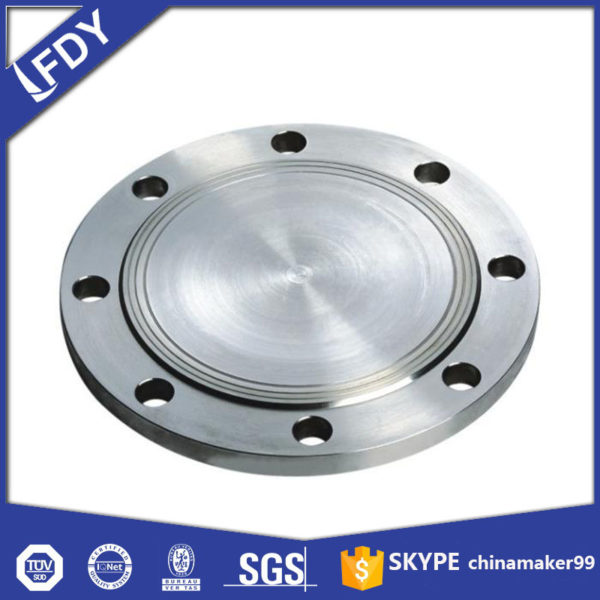Stainless steel flange is an important connecting part that is frequently used in modern pipeline construction, and it is also called flange or flange. Its main function is to connect the pipes to each other. Because the flange has the advantages of easy disassembly and can withstand a lot of pressure, it is particularly convenient to use.

Flanges are widely used in pipelines of various projects such as machinery industry and construction. The size of the flange has two meanings in a narrow sense and a broad sense.
The flange size in the narrow sense refers to the specific size of each part of the flange, such as: EN1092-101 PN40 PL flat flange, the outer diameter is 660MM, the inner diameter is 441.0MM, the disk thickness is 60MM and so on.
The flange size in a broad sense means that the dimensions of each part of the flange under a certain pressure are not the same. In order not to make it confusing, a number needs to be used to represent a flange, so the flange size in a broad sense refers to a flange. Code (generally expressed as XX inches or DNXX). For example, under the pressure of American standard flange 150LB, there are 1/2 inch to 24 inch size division, while under the pressure of American standard flange 300LB, there are also 1/2 inch to 24 inch size division, but under the same size under different pressures , the data of each department will not be the same.
Flange is mainly used for pipe fittings, and its specifications can be distinguished according to the inner diameter. Flanges are generally more metric, and some are non-standard, but there are fewer modern inch flanges. The inch flanges are called inches, which are 1″, 2″, 4″, 5″, of course. There are various other models.
There are two main international pipe flange standards, namely the European pipe flange system represented by German DIN (including the former Soviet Union) and the American pipe flange system represented by American ANSI pipe flanges. In addition, there are Japanese JIS pipe flanges, but they are generally only used for public works in petrochemical plants, and have little impact internationally.
 Language
Language Espanol
Espanol English
English Italian
Italian عربى
عربى
 Skype: chinamaker99
Skype: chinamaker99  Tel: 86-316-5120812
Tel: 86-316-5120812  Email:
Email:  Whatsapp:
Whatsapp: 
